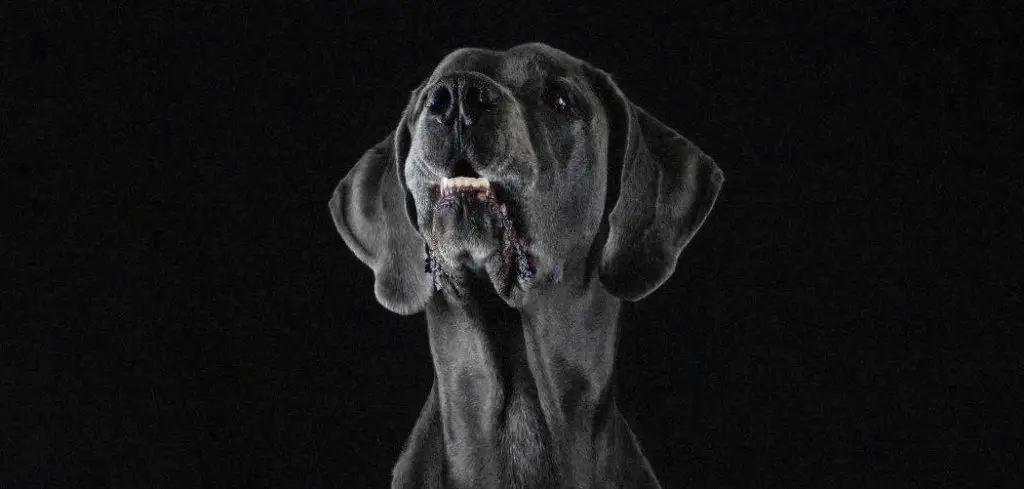A dog that’s drooling excessively and acting aggressively is not just startling — it can be dangerous and alarming for both the dog and the owner.
We outline the common reasons for a dog drooling and acting aggressive, what you can do at home, and when to seek veterinary help.
Dog Drooling and Aggressive — Why It Happens
When a dog drools and becomes aggressive, it can be a sign of physical discomfort, neurological issues, or extreme stress.
Painful dental infections, heatstroke, seizures, and behavioral triggers like fear or trauma can all cause this pairing of symptoms. Rabies is a rare but critical possibility that must be ruled out quickly.
Sometimes, aggression is a defense mechanism against pain or confusion. In other cases, toxins or neurological conditions may impair the dog’s control.

Dog Drooling and Aggressive: Common Causes
Dental Disease or Oral Pain
Dental abscesses, broken teeth, or mouth injuries can make eating and even movement painful.
Excess drooling often accompanies oral pain, as saliva production increases and the dog avoids swallowing due to discomfort.
Aggression may result from attempts to avoid being touched near the mouth or jaw.
Owners may notice pawing at the face, food dropping from the mouth, or refusal to eat. This pain-fueled defensiveness is often mistaken for behavioral aggression.
Read more: Dog Drooling and Foaming at Mouth (Could it be something dangerous?)
Seizures and Neurological Conditions
Seizures or neurological disorders like epilepsy or canine cognitive dysfunction can trigger both drooling and behavioral changes.
Drooling may occur before, during, or after a seizure — particularly in partial seizures where the dog remains semi-aware.
Aggression during these events can result from disorientation, fear, or abnormal brain activity.
You might observe glassy eyes, twitching, circling, or confusion alongside sudden snarling or snapping.
This can be deeply unsettling, especially if the dog seems unaware of their own behavior.
Heatstroke
Overheating can be life-threatening and may cause drooling and erratic behavior, including aggression.
As a dog’s body temperature climbs, drooling increases in an effort to cool down, and the brain may become impaired.
This leads to confusion, anxiety, and even panic — all of which can trigger aggressive reactions.
Watch for panting, red gums, vomiting, or collapse. Dogs left in hot environments or overexercised in warm weather are at high risk.
Toxin Exposure
Certain toxic substances — including pesticides, slug bait, or household chemicals — can lead to hypersalivation and altered behavior.
Toxins may affect the gastrointestinal system, causing nausea and drooling, or act directly on the nervous system, resulting in aggression or seizures.
Signs may appear rapidly and worsen within minutes to hours. You may notice tremors, vomiting, dilated pupils, or stumbling.
Ingestion of cannabis, chocolate, or xylitol may also lead to these behaviors.
Rabies (Rare but Serious)
Rabies is extremely rare in vaccinated dogs but should always be considered with sudden aggression and excessive drooling.
This fatal viral disease affects the nervous system and leads to progressive symptoms, including anxiety, disorientation, and hypersalivation.
Aggression is one of the hallmark signs, often triggered by minimal stimulation.
If your dog has had potential contact with a wild animal or is unvaccinated, immediate veterinary attention is critical.
Behavioral Triggers and Trauma
Fear, anxiety, or past trauma can manifest as aggression and stress-induced drooling.
Dogs who feel threatened may salivate excessively as part of their fight-or-flight response.
Aggression in these cases is often defensive, not malicious — an attempt to protect themselves when overwhelmed.
Triggering situations may include loud noises, unfamiliar people, or past abuse. The behavior may improve in a calmer environment or with behavioral support.
What to Do If Your Dog Is Drooling and Acting Aggressive
If your dog begins drooling and acting aggressively, stay calm and avoid approaching them directly, especially near the mouth or face.
Give them space and remove other pets or people from the area to reduce stimulation. Observe their body language — trembling, pacing, growling, or changes in eyes or ears can help you understand their stress level.
Try to recall any recent exposures to heat, toxins, or stressful events. This can help guide next steps and your vet’s diagnosis.
If safe, record a video of the behavior for your veterinarian to evaluate.
Do not attempt to examine your dog’s mouth or medicate them without professional advice — even well-meaning actions may provoke further aggression or injury.
When to Call or Visit Your Vet
You should seek immediate veterinary help if your dog:
Has sudden or escalating aggression with no clear cause
Is drooling excessively for more than a few minutes
Has had a seizure or appears disoriented
Shows signs of heatstroke: panting, vomiting, red gums, or collapse
May have ingested something toxic
Rabies concerns, especially in unvaccinated dogs or those bitten by wildlife, also require emergency care.
Your vet may run blood tests, check for oral injuries, evaluate neurological function, or recommend hospitalization depending on the suspected cause.
Read more: Dog Drooling and Confused (What it could mean)
Key Takeaway
Excessive drooling and sudden aggression in dogs are more than just alarming — they often point to serious underlying issues.
From pain to toxins to neurological changes, many conditions can lead to these symptoms.
While some causes may be manageable at home with rest and observation, others — like seizures or poisoning — require prompt medical care.
Your veterinarian is your best partner in understanding and treating your dog’s behavior safely and compassionately.
Trust your instincts, prioritize safety, and never hesitate to reach out for professional help.
